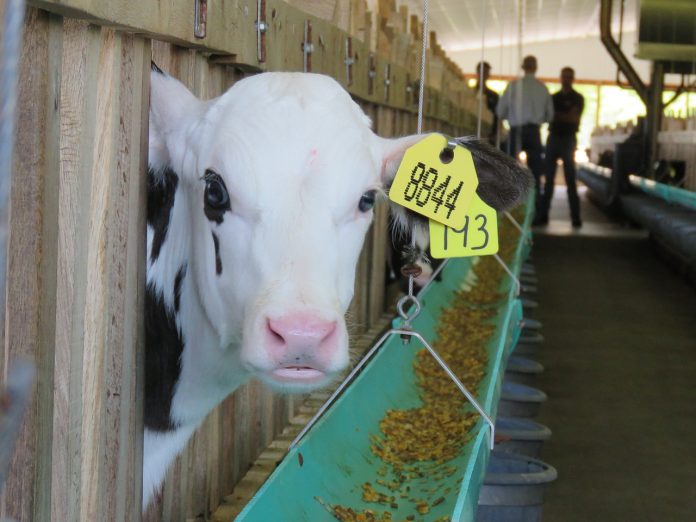The last month has been a weather rollercoaster with the next few weeks looking like more of the same. While I don’t mind warmer days for working outside, the opening and closing barn curtains every night and morning leaves me longing for the days when winter will set in and visit for weeks on end. When the air turns cold and crisp, but the humidity is so low things will dry outside even in the cold. After a week when someone asks if it is cold outside, you respond with, it’s really not that bad if you are out of the wind.
Unfortunately, the weather we have is a perfect recipe for respiratory disease which often affects young calves and heifers the worst. Respiratory disease is driven by air temperature, humidity, wind speed and harmful gasses in the farm. All of these are managed through barn ventilation. However, even with the best ventilation, not all factors can be eliminated. When temperatures fall below 50 F the risk of respiratory disease increases. But trying to keep barns above 50 F may be the worst thing we can do as it often increases other risk factors.
Bedding
While calves that are less than three weeks of age have a lower critical temperature of 46-50 F we need to provide them with deep bedding and extra calories to stay warm instead of trying to keep barns warm. As the calves get older their lower critical temperature where they need extra energy to stay warm decreases as rumen function increases. A fully ruminating heifer with a dry coat has a lower critical temperature of 18 F.
Humidity
When barns are closed up to keep animals warm, the humidity and pathogen load increase. The ideal barn humidity is from 50-70% RH. When barn relative humidity is over 85% for 24 hours respiratory track damage begins to happen. While a massive dehumidifier would be nice for those times when Mother Nature sends us weather that would allow a fish to live on land it isn’t practical. During those times our best defense is to limit drafts and keep pens bedded well to decrease noxious gases.
Eliminate drafts
For calves still on milk, a draft occurs when they experience a wind directly on them at a speed over half a mile per hour; older heifers don’t experience a draft until winds are between 1 and 2 MPH. The best way to eliminate drafts is to close the lower portion of the barn and allow air to move above the animals to lift the air with noxious gases out of the pen.
Draughty conditions are often thought of as a precursor to respiratory issues. One study found that in warm damp barn ultrasound lung lesions were found in 81.8% of calves who also had drafty conditions, compared to 54.2% who were exposed to a draft. However, if barns were kept dry and better ventilated lung lesions decreased to 31.6% of calves.
Gas elimination
Noxious or harmful gas elimination is a very critical part of respiratory disease prevention. This is done both through ventilation and bedding pens. While a humidity reading is beneficial, if laying height humidities are in the normal range and you have a lot of respiratory disease challenges, taking noxious readings for ammonia, hydrogen sulfide, carbon dioxide and methane may help you understand the causes of your issues.
Although most of these gasses are decreased by increasing bedding that helps capture gasses in the manure and improve ventilation, making sure barns can utilize thermal buoyance and the chimney effect is critical for winter ventilation. If your barn doesn’t have some type of roof ventilation through ridge ventilators on peaked barns or eave openings on mono-slop, this is a good place to start.
Weather station sensor
A handy tool in barn ventilation is a weather station in every barn that monitors interior temperature and relative humidity. Recently I was working with a new sensor that is coming on the market to monitor calf and heifer temperature and activity for disease detection. This system also came with an in-barn weather station that helped us solve the ventilation changes to decrease sick animals instead of just finding them. While the sensor has to be positioned so the animals won’t try to eat it, having a sensor at standing height and resting height in the pens will provide you with the most useful information.
Lung ultrasound
Besides visual signs of respiratory disease another tool for pre-weaned calves is lung ultrasounds. A lung ultrasound allows producers to detect sub-clinic respiratory disease. Two different studies have found that almost 70% of respiratory disease goes undetected but decreases first lactation milk production. Lungs are a newer tool to find these subclinical cases.













